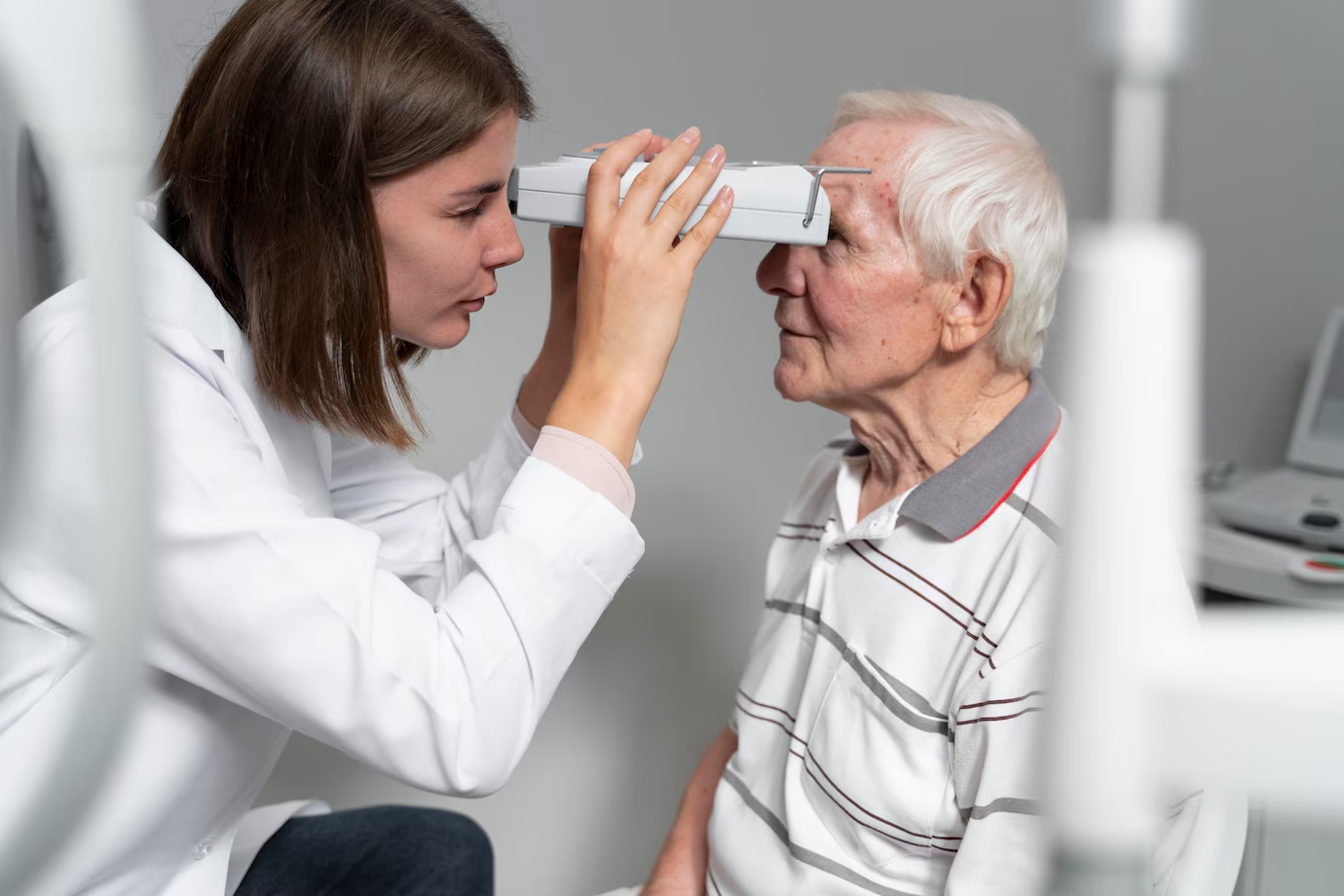Cataracts are one of the leading causes of vision impairment. It particularly occurs in older adults, but they are often misunderstood or overlooked in their early stages. Early detection and proper understanding of symptoms are critical to maintaining eye health and quality of life. Here’s what you need to know about cataracts and their early warning signs.
What Are Cataracts?
Cataracts occur when the natural lens of the eye becomes cloudy, interfering with the ability to see clearly. This clouding often develops slowly over time and can result from age-related changes, injury, or certain medical conditions. While cataracts are common among seniors, early recognition of symptoms can make a significant difference in preserving vision.
Key Symptoms of Cataracts
Knowing the common symptoms of cataracts can help you or your loved ones identify the condition early and seek appropriate care.
- Blurry or Clouded Vision: One of the earliest signs of cataracts is a gradual blurring or clouding of vision. Over time, tasks like reading or driving, especially at night, may become increasingly difficult.
- Sensitivity to Light and Glare: Cataracts can cause heightened sensitivity to light, making it uncomfortable to be in bright sunlight or glare from headlights or lamps.
- Halos Around Lights: A noticeable “halo” effect around lights, particularly at night, is a common symptom associated with cataracts.
- Fading or Yellowing of Colors: Colors may appear less vibrant. You may notice that whites appear yellow, or that recognizing bright hues becomes challenging.
- Double Vision in One Eye: Cataracts can occasionally produce double vision or overlapping images in one eye, even when it is open and uncovered.
- Frequent Prescription Changes: If you notice that your eyeglass or contact lens prescriptions are changing frequently without significantly improving your vision, this could signal cataract development.
The Importance of Early Detection
Cataracts often progress slowly, and the symptoms might be easy to dismiss as normal aging. However, early detection through regular eye examinations is crucial. Eye care professionals can identify cataracts during routine check-ups and recommend appropriate interventions, such as stronger eyewear, lifestyle adjustments, or surgical treatment when necessary. Prompt care can prevent cataracts from significantly impairing your daily life and help maintain clear vision for years to come. With early detection, here are some of the results that can occur:
- Prevention of Vision Loss: Cataracts, if left untreated, can lead to severe vision impairment and even blindness. Detecting them early allows for timely intervention, potentially slowing down the progression and preserving vision for a longer time.
- Improved Treatment Outcomes: Cataract surgery is the most effective treatment. The earlier cataracts are diagnosed, the better the chances of a smoother and more successful surgery. Early detection ensures that the cataracts are not too advanced, which can sometimes complicate surgery or recovery.
- Better Quality of Life: Cataracts can cause blurred vision, glare, and difficulty with night vision, affecting daily activities such as reading, driving, and even walking. Early diagnosis enables individuals to adjust their lifestyle, use aids like glasses or special lighting, or consider surgical options sooner, improving overall quality of life.
- Prevention of Other Eye Health Issues: In some cases, cataracts can contribute to other eye conditions, such as glaucoma or retinal issues. Early detection of cataracts can help to monitor and address potential complications before they worsen.
- Lower Risk of Accidents: Vision impairment due to cataracts increases the risk of falls, accidents, and injuries, especially in older adults. Early detection can help reduce these risks by ensuring that patients receive appropriate treatment or lifestyle adjustments.
- Cost-Effective Care: Catching cataracts early can lead to less complicated and more affordable treatment options. Delaying treatment may result in more advanced surgery or prolonged dependence on corrective eyewear, which could be costlier in the long run.
When to See an Eye Care Professional
If you or a loved one are experiencing any of the symptoms above or noticing changes in vision, schedule an appointment with an eye care provider immediately. Cataracts are highly treatable, and the earlier they are diagnosed, the better the outcomes. With advancements in eye care and treatment, millions of people enjoy restored vision and improved quality of life. Proper education, vigilance, and timely medical attention are the keys to success. For more information or to schedule an eye exam, consult a trusted eye care professional.

